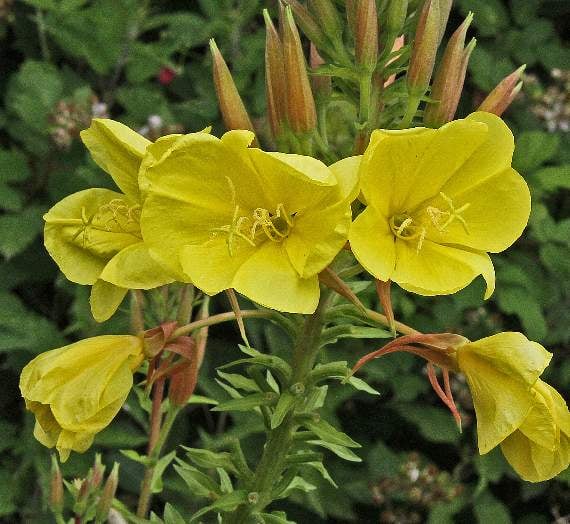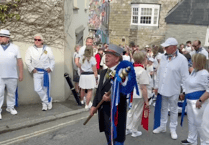In this week’s Nature Watch, photographer Ray Roberts takes us on an informative ’wildflower afternoon’ walk, following on from his butterfly morning described last week.
I went for a walk in the sun with the intention of looking at wild flowers only, no butterflies or insects, but one of the first things I saw was robin’s pincushion on one of the dog roses growing on the hedge. This prickly growth replaces the flowers and is caused by the larvae of the wasp, Diplolepis rosae, that live in the hardened centre of the gall. It was already turning red, a feature that makes the gall stand out in late summer and autumn.
Further on down a narrow lane there was some evening primrose – Oenothera biennis – with their tall stalks and wide yellow flowers. This plant was brought over from North America during the 17th century and is still grown for its oil which is a valuable ingredient in medical products. It can be found in the wild on waste ground and on railway embankments and at night their sweet aroma fills the air. This is also the time when they are pollinated by night-flying moths.
The yellow flowers of lots of imperforate St John’s-wort – Hypericum maculatum – could be seen growing in patches on the hedge. There is a cousin; perforate St John’s-wort - Hypericum perforatum – which has tiny translucent dots on the underside of its leaves.
There was lots of hemp agrimony – Eupatorium cannabinum – along the roadside with tall stalks, up to 1.5m tall and topped with clusters of rather dull pinkish flowers. Named for Eupater, King Mithridates of Pontus 120-63 BC who used the plant to prepare antidotes to various poisons, as he thought being king, his life was in danger. He was assassinated by poison, or as some believe, he used poison to commit suicide.
Large sprays of common ragwort – Senecio jacobaea – can be seen along the roadside hedges and around fields. A very striking plant with its dark green leaves and yellow daisy-like flowers, is really a pest on farmland being poisonous to cattle and horses. The black and red coloured cinnabar moth lays her eggs on the leaves which the resulting caterpillars quickly devour.
It is hard to miss the white flowered meadowsweet – Filipendula ulmaria – as it is well over a metre high and likes to grow near water or at the bottom of a hedge where the soil is dampest. The blooms have a lovely aroma and the leaves were once dried and used to give mead and port a pleasing bouquet. Indeed, the name meadow suggests it grows on meadows but it is a corruption of ‘meadwort’, as it was once called.
A flower I don’t see very much is purple toadflax - Linaria purpurea. The tall slender spires of this plant can occasionally be seen alongside lanes and minor roads but it also thrives on old stone walls on farms and waste ground. They appeared a couple of places around the parish.




